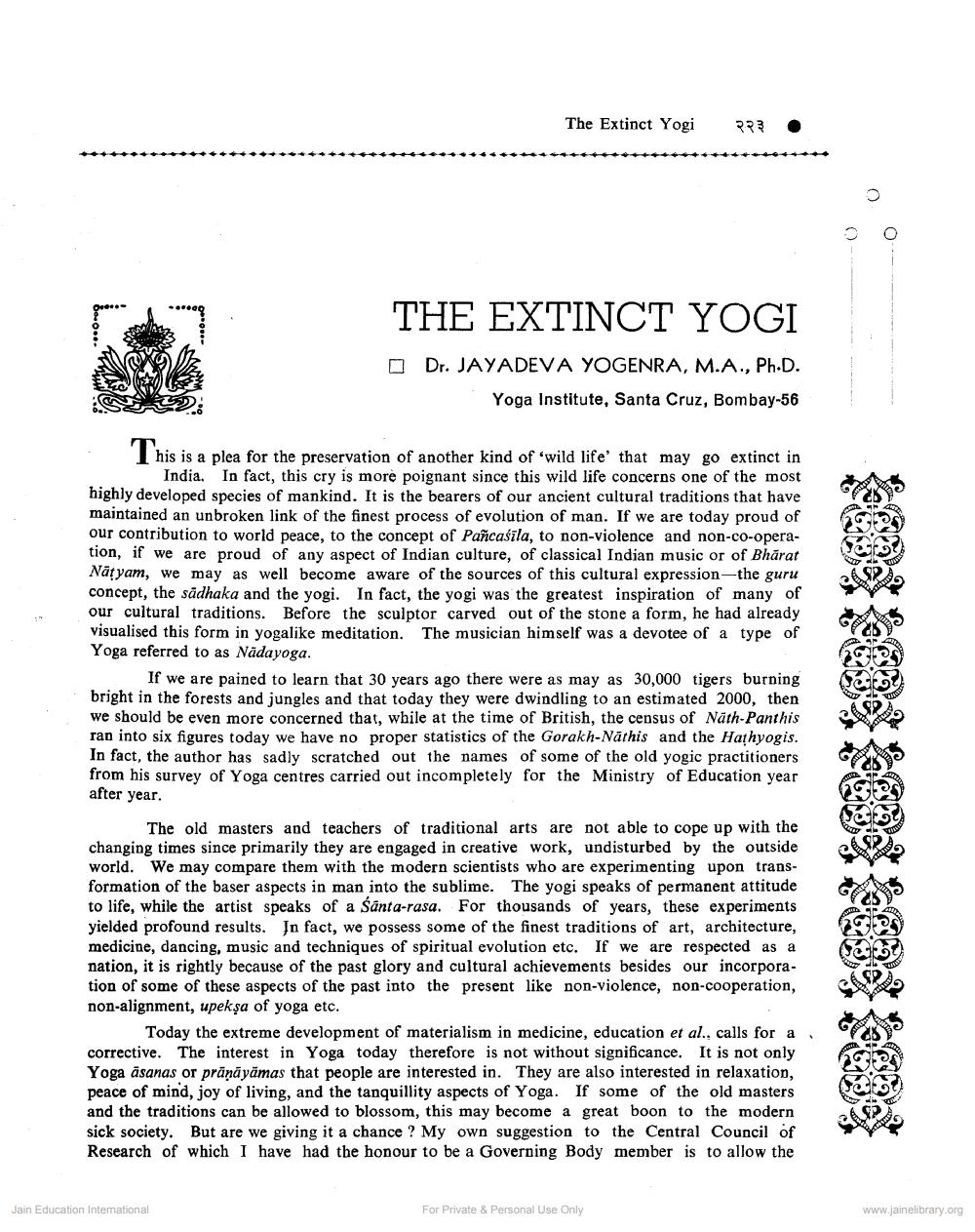________________
The Extinct Yogi
RR
.
THE EXTINCT YOGI Dr. JAYADEVA YOGENRA, M.A., Ph.D.
Yoga Institute, Santa Cruz, Bombay-56
This is a plea for the preservation of another kind of 'wild life that may go extinct in
India. In fact, this cry is more poignant since this wild life concerns one of the most highly developed species of mankind. It is the bearers of our ancient cultural traditions that have maintained an unbroken link of the finest process of evolution of man. If we are today proud of our contribution to world peace, to the concept of Pañcaśīla, to non-violence and non-co-operation, if we are proud of any aspect of Indian culture, of classical Indian music or of Bharat Nātyam, we may as well become aware of the sources of this cultural expression-the guru concept, the sādhaka and the yogi. In fact, the yogi was the greatest inspiration of many of our cultural traditions. Before the sculptor carved out of the stone a form, he had already visualised this form in yogalike meditation. The musician himself was a devotee of a type of Yoga referred to as Nādayoga.
If we are pained to learn that 30 years ago there were as may as 30,000 tigers burning bright in the forests and jungles and that today they were dwindling to an estimated 2000, then we should be even more concerned that, while at the time of British, the census of Näth-Panthis ran into six figures today we have no proper statistics of the Gorakh-Näthis and the Hathyogis. In fact, the author has sadly scratched out the names of some of the old yogic practitioners from his survey of Yoga centres carried out incompletely for the Ministry of Education year after year.
The old masters and teachers of traditional arts are not able to cope up with the changing times since primarily they are engaged in creative work, undisturbed by the outside world. We may compare them with the modern scientists who are experimenting upon transformation of the baser aspects in man into the sublime. The yogi speaks of permanent attitude to life, while the artist speaks of a Santa-rasa. For thousands of years, these experiments yielded profound results. In fact, we possess some of the finest traditions of art, architecture, medicine, dancing, music and techniques of spiritual evolution etc. If we are respected as a nation, it is rightly because of the past glory and cultural achievements besides our incorporation of some of these aspects of the past into the present like non-violence, non-cooperation, non-alignment, upekṣa of yoga etc.
Today the extreme development of materialism in medicine, education et al.. calls for a corrective. The interest in Yoga today therefore is not without significance. It is not only Yoga asanas or pränä yömas that people are interested in. They are also interested in relaxation, peace of mind, joy of living, and the tanquillity aspects of Yoga. If some of the old masters and the traditions can be allowed to blossom, this may become a great boon to the modern sick society. But are we giving it a chance ? My own suggestion to the Central Council of Research of which I have had the honour to be a Governing Body member is to allow the
462
Jain Education International
For Private & Personal Use Only
www.jainelibrary.org




